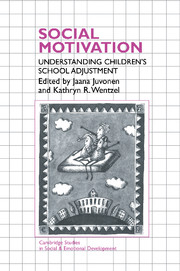Foreword
Published online by Cambridge University Press: 22 October 2009
Summary
In the middle 1940s, David McClelland and his coworkers initiated what might be considered the first systematic experimental research pursuing issues in human motivation. An early goal they set for themselves was to develop a measure of human motives in order to identify individuals differing in motive strengths. A thermometer metaphor guided this work. It was reasoned that a “good” thermometer would register an increase when the heat was turned on. In a psychological context, the idea was to manipulate some antecedent that would produce an increase in motive strength under arousal conditions, as opposed to contexts in which there was no stimulating occurrence.
In achievement contexts, it was reasoned that failure would function to galvanize achievement needs. Thus, some individuals failed at an achievement task, whereas others succeeded or were given a nonachievement-related activity to perform. Then the thermometer was thrust into the mouth (or, in this case, in front of the eyes) of the individual to ascertain if increased motivation was registered. The measuring device selected was a projective instrument called the Thematic Apperception Test (TAT). Indeed, stories to TAT cards did contain more achievement imagery following failure than after success or some control experience. In this manner, it was deemed that an appropriate instrument to assess achievement desires had been developed. It therefore also followed that when persons respond to the TAT under neutral or nonaroused conditions, those with higher scores are “walking around” aroused; that is, they are more motivated to achieve than those exhibiting lower scores in this neutral context.
- Type
- Chapter
- Information
- Social MotivationUnderstanding Children's School Adjustment, pp. xiii - xviPublisher: Cambridge University PressPrint publication year: 1996



